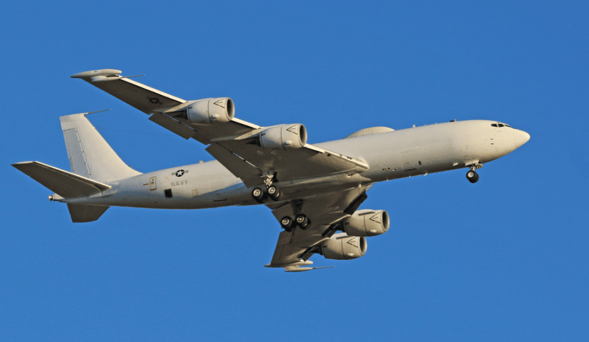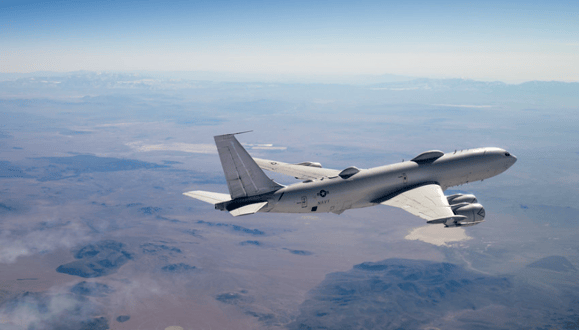$3.5 Billion Doomsday Plane Deal: The U.S. Navy’s High-Stakes Upgrade

The nuclear command and control infrastructure of the U.S. military is experiencing a vital transformation. Central to this shift is the $3.5 billion Doomsday Plane contract, which aims to ensure continuous communication during a national crisis.
As Lt. Gov. Matt Pinnell stated, “The aerospace and defence industry is at the heart of our strategy to diversify our economy.”
Let’s take a deep dive into everything you need to know about this significant undertaking.
Meet the Key Players: Long Wave Inc. & Northrop Grumman
Founded in 1995 by Phil Miller, Long Wave Inc. is a privately held defense and telecommunications company headquartered in Oklahoma City, Oklahoma. The company specializes in low-frequency communications, systems engineering, and defense technology—with a strong focus on U.S. military projects.
Over the years, Long Wave has grown significantly, particularly in supporting the U.S. Navy’s TACAMO mission, which ensures secure communication with nuclear forces. Currently, the company is in an expansion phase, hiring extensively to meet growing contract demands.
It will act as a subcontractor on behalf of Northrop Grumman Corporation (NYSE: NOC), one of the world’s largest defense contractors, formed in 1994 after Northrop Corporation acquired Grumman Aerospace. Headquartered in Falls Church, Virginia, the company employs over 90,000 people and generates approximately $39 billion in annual revenue.
Northrop Grumman is a leader in aerospace, cybersecurity, and advanced defense technologies. It produces critical military assets such as the B-2 Spirit bomber, B-21 Raider, and global surveillance systems. Led by CEO Kathy Warden, the company remains at the forefront of U.S. defense innovation.
Additional Participating Defense Contractors

In addition to Long Wave Inc., the $3.5 billion contract will also be shared among several major defense contractors, including:
- Lockheed Martin (NYSE: LMT) – A leading aerospace and defense company that is likely contributing to avionics, communication, and aircraft systems.
- Skunk Works (Lockheed Martin’s Advanced Development Programs) – Lockheed Martin is known for cutting-edge military aviation technology, possibly assisting in classified or innovative aircraft design aspects.
- Raytheon Technologies (RTX) (NYSE: RTX) – A major player in defense electronics and communications, likely involved in advanced communication systems or cybersecurity.
- Crescent Systems – A smaller but specialized company that possibly contributes software, engineering, or support systems.
The Doomsday Plane: America’s Ultimate Failsafe

The Doomsday Plane program is a critical component of the United States’ nuclear command and control system. Its design ensures that military leadership can maintain communication and control over nuclear forces in the event of a catastrophic crisis. The latest iteration, the E-130J aircraft, will replace the ageing E-6B Mercury, which has been in service since the 1980s.
These specialized aircraft, operated by the U.S. Navy’s TACAMO (Take Charge And Move Out) mission, serve as airborne command centers capable of withstanding electromagnetic pulses (EMPs), cyberattacks, and nuclear strikes.
Their primary function is to relay orders from the National Command Authority (the President and Secretary of Defense) to the U.S. nuclear forces, including submarines, missile silos, and strategic bombers.
Unlike conventional military aircraft, Doomsday Planes are equipped with hardened communication systems, secure data links, and advanced defensive capabilities, allowing them to operate in extreme wartime conditions. Thus, the E-130J program is a critical component of the U.S. military’s nuclear deterrence and strategic coordination activities.
Inside the $3.5 Billion U.S. Navy Doomsday Plane Contract
The $3.5 billion contract, awarded by the U.S. Department of Defense (DoD) and the U.S. Navy, is a multi-year agreement aimed at developing the next-generation E-130J Doomsday Plane. The primary contractor, Northrop Grumman, will lead the program, with key subcontractors including Long Wave Inc., Lockheed Martin, Raytheon Technologies, Skunk Works, and Crescent Systems.
Here’s a quick spec sheet for the upcoming project:
- Total Value: $3.5 billion.
- Long Wave Inc.’s Share: $350 million.
- Primary Contractor: Northrop Grumman.
- Awarding Agency: U.S. Navy, under the DoD’s nuclear modernization program.
- Project Duration: Initial 6-year development phase, with potential long-term sustainment contracts.
The contract mandates the design, development, and testing of the E-130J, which will replace the aging E-6B Mercury fleet used for nuclear command and control operations. The new aircraft must feature EMP-resistant communications, advanced encryption, and secure airborne command capabilities.
Funding is allocated through the Pentagon’s National Defense Authorization Act (NDAA), with oversight from the Naval Air Systems Command (NAVAIR).
A Turning Point for U.S. Aerospace
Chris Lozano, Long Wave’s Chief Marketing Officer, acknowledged that “This is the largest contract we’ve ever been awarded.” A project of this size is sure to prove a watershed moment for a company that turns over “only” a few million each year.
Also, beyond its military significance, this project marks a turning point for U.S. aerospace, proving that defense investments are not just about security — they are powerful drivers of technological advancement and economic expansion.